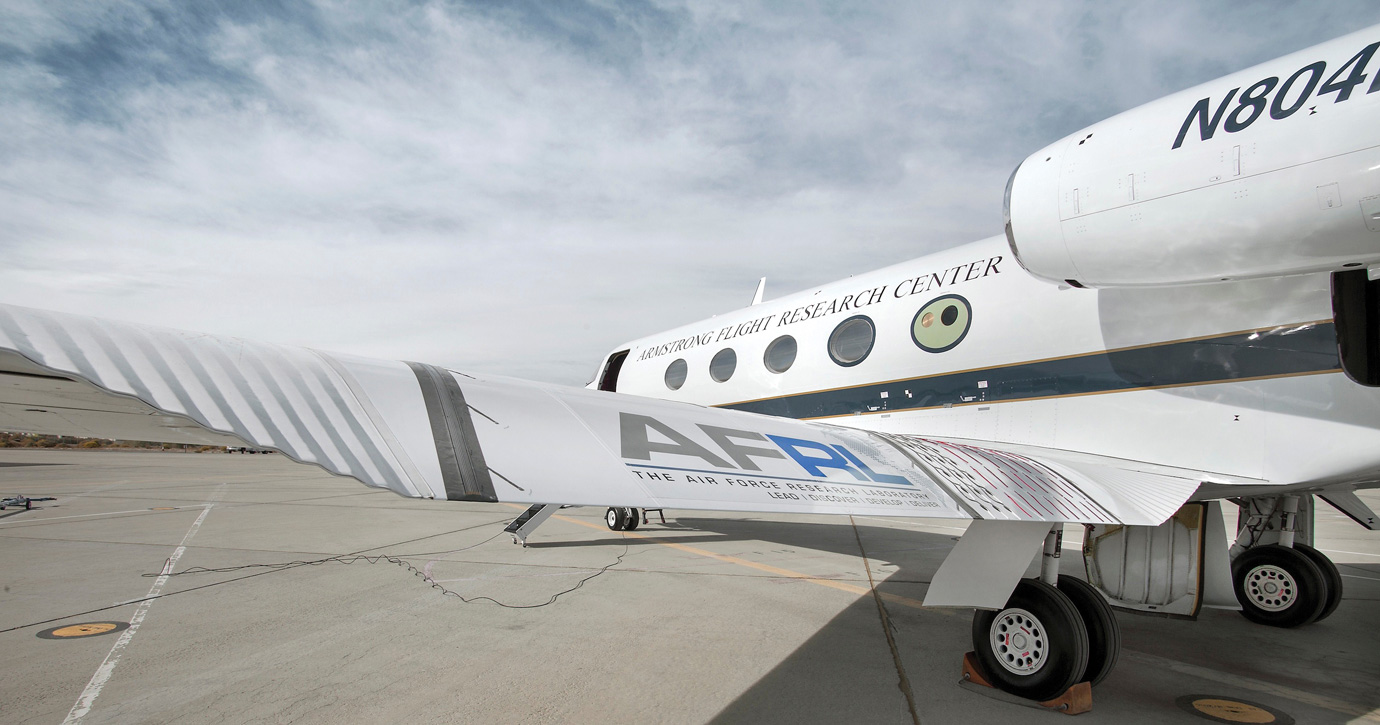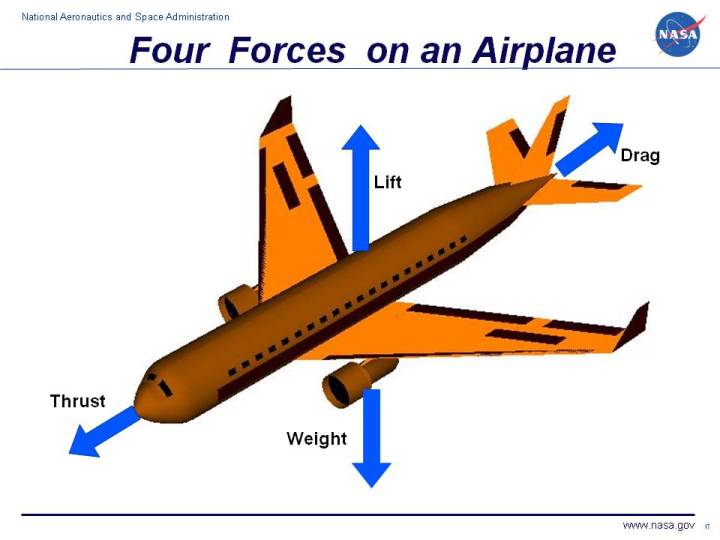 Scientists constantly seek inspiration from the natural world around us, as they try to improve the design of structures. And when it comes to flying, there is so much to learn from birds.
Scientists constantly seek inspiration from the natural world around us, as they try to improve the design of structures. And when it comes to flying, there is so much to learn from birds.
Recently, NASA jointly with Air Force Research Laboratory and a company called FlexSys tested a plane wing that can change shape. The flexible material can bend from -2 degrees to 30 degrees while in flight.
Let's take this opportunity to understand the forces that act on a plane, and how the new material can help.
Aerodynamics
Aerodynamics, or the study of moving air, focuses on four major forces: lift, weight, thrust, and drag.
These are the same forces that allow an airplane to fly. The lift force keeps the object in the air; the weight force pulls the object down; the thrust force moves the object forward, and the drag force pulls the object back. A plane can only fly if its lift is greater than its weight and if its thrust is greater than its drag.
 The drag force (known as air resistance) is similar to friction, which is a resistive force caused by a solid. You can feel drag if you put your hand out of the window of a moving car. You can literally feel the air pushing on your open hand.
The drag force (known as air resistance) is similar to friction, which is a resistive force caused by a solid. You can feel drag if you put your hand out of the window of a moving car. You can literally feel the air pushing on your open hand.
On a plane, there are devices called flaps at the edge of airplane wings that provide the lift or drag, allowing a plane to take off or land. If you have traveled on a plane and were seated in the same row as the plane's wings, have you seen these flaps move down and back? These are controlled by the pilot.
The New Design
On planes today, the flaps have a limited range of motion. In addition, gaps open up as the flaps move down and back. As air rushes through these gaps, it produces a lot of noise.
To mimic the smooth and seamless up-and-down motion of a bird's wings, scientists have been looking for flexible, smart materials that can do the same on a plane. "Flexfoil" is one such smart aerospace material that can be attached to the edges of existing plane wings. NASA has done 22 tests so far, with the smooth flaps set at different angles.
Initial results have shown that this flexible wing reduces overall weight as well as noise during takeoff and landing. In addition, the smoother wing reduces air friction, making the plane more fuel-efficient.
Certainly, a lot more testing needs to be done before this new wing can be incorporated on commercial planes. But it certainly seems like we may see quieter planes in the future!







